Epidemic Simulation Platform
Project description
Episimmer : Epidemic Simulation Platform
Powered by HealthBadge
Episimmer is an Epidemic Simulation Platform that aims to provide Decision and Recommendation Support to help answer your questions related to policies and restrictions during an epidemic. Using simulation techniques widely applied to other fields, we can help schools and colleges discover and hone the opportunities and optimizations they could make to their COVID-19 strategy.
From the most simple decisions (Which days to be online or offline) to more complex strategies (What restrictions should I put on library use?, How many times should I test?, Whom do I test?) Episimmer is the tool for the job.
The Environment
Episimmer is an agent-based epidemic simulator which allows you to model any kind of disease spreading environment. With the help of simple text files, you can have your agents and the interaction network setup in no time. Here are some example of the environments you can create.
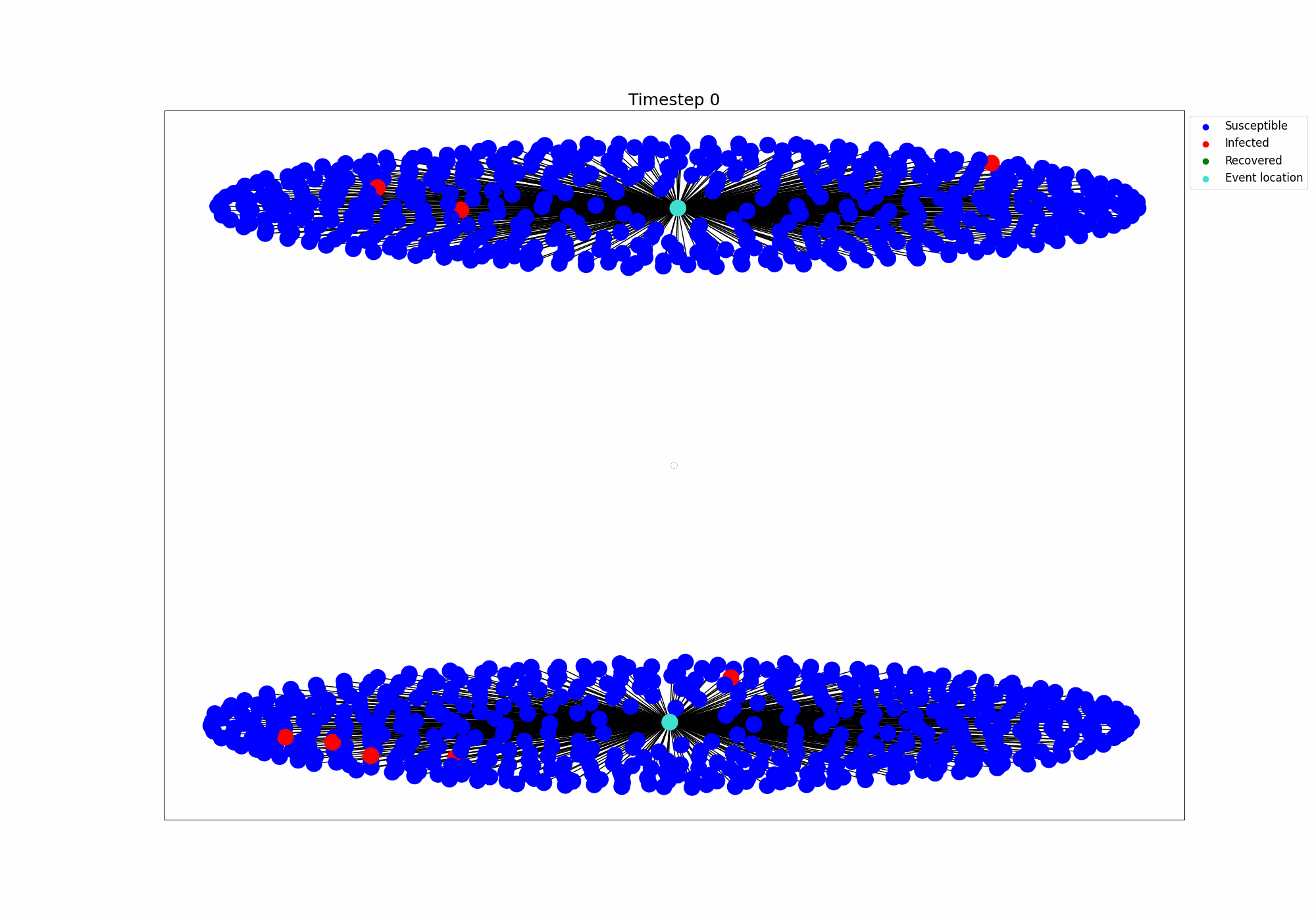 |
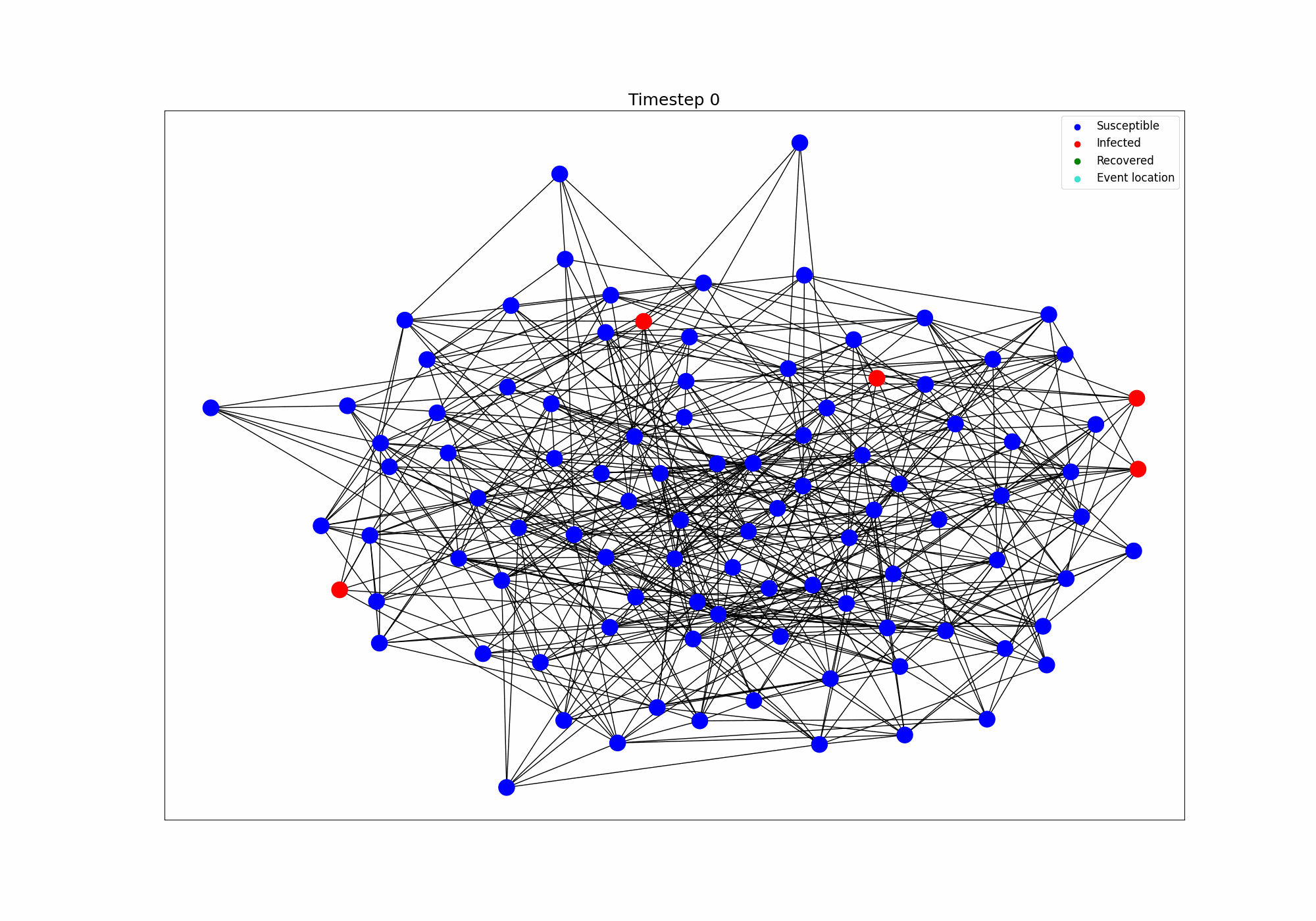 |
|---|---|
| Completely connected agents at two locations | Random Graph G(100, 0.1) |
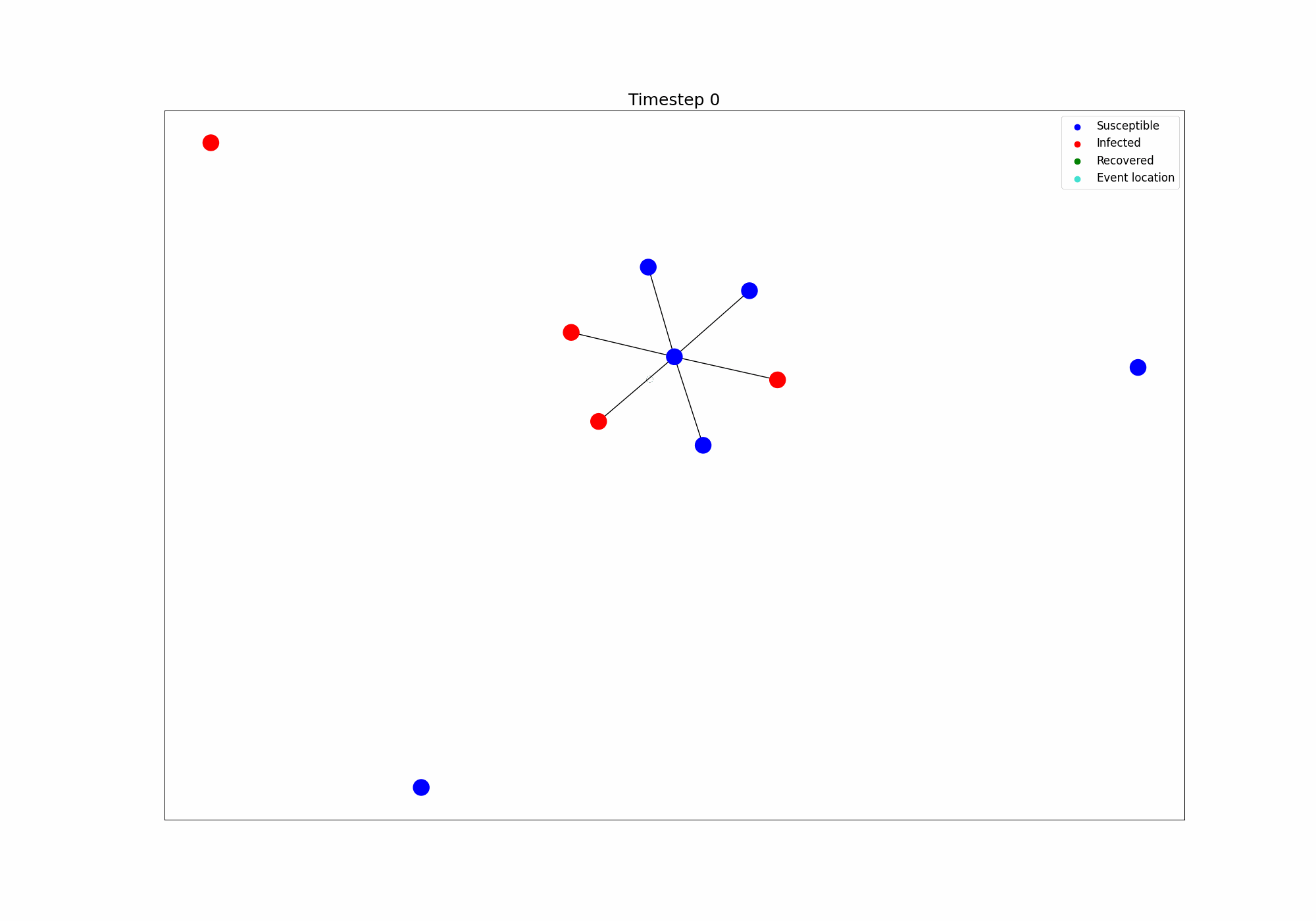 |
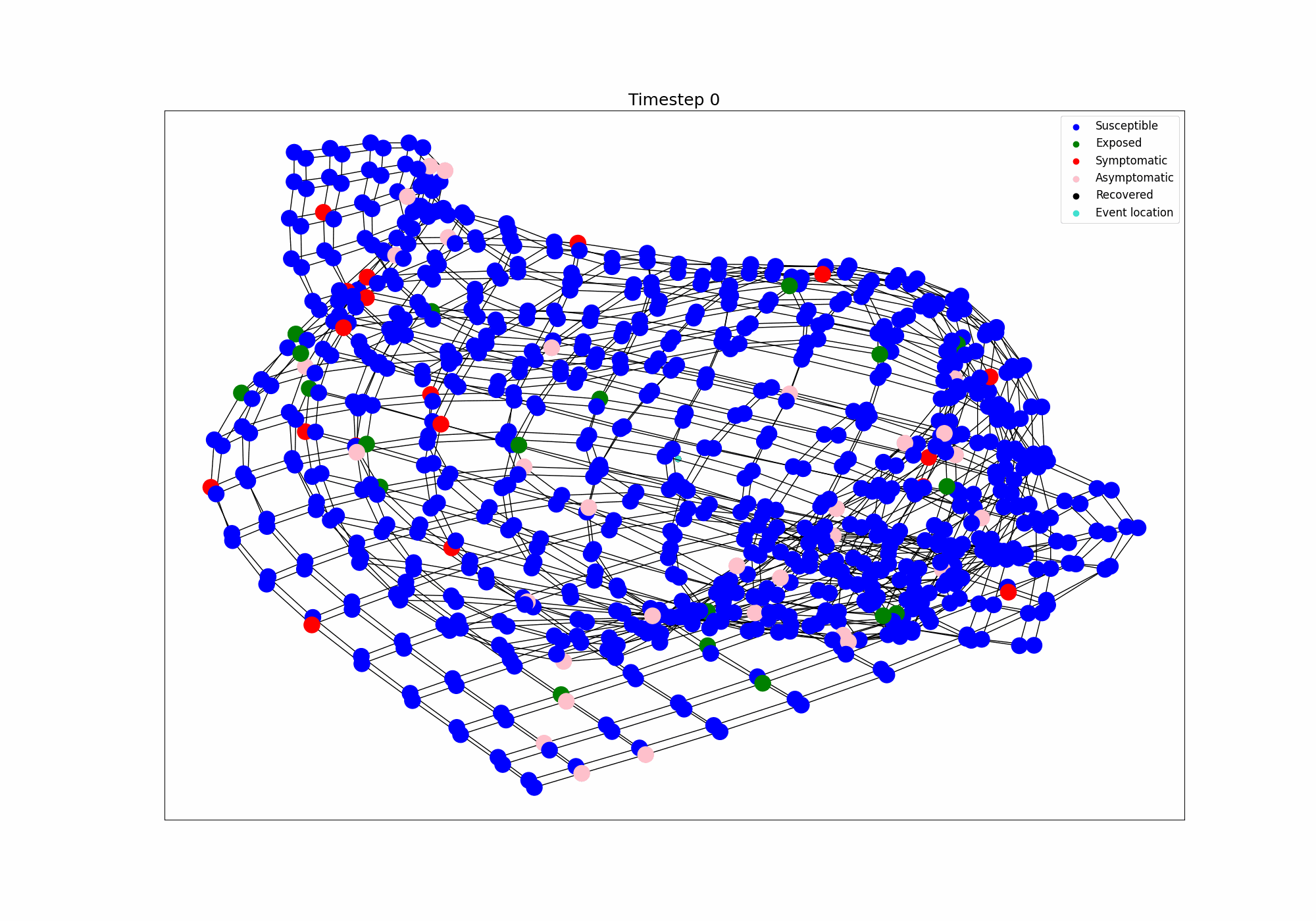 |
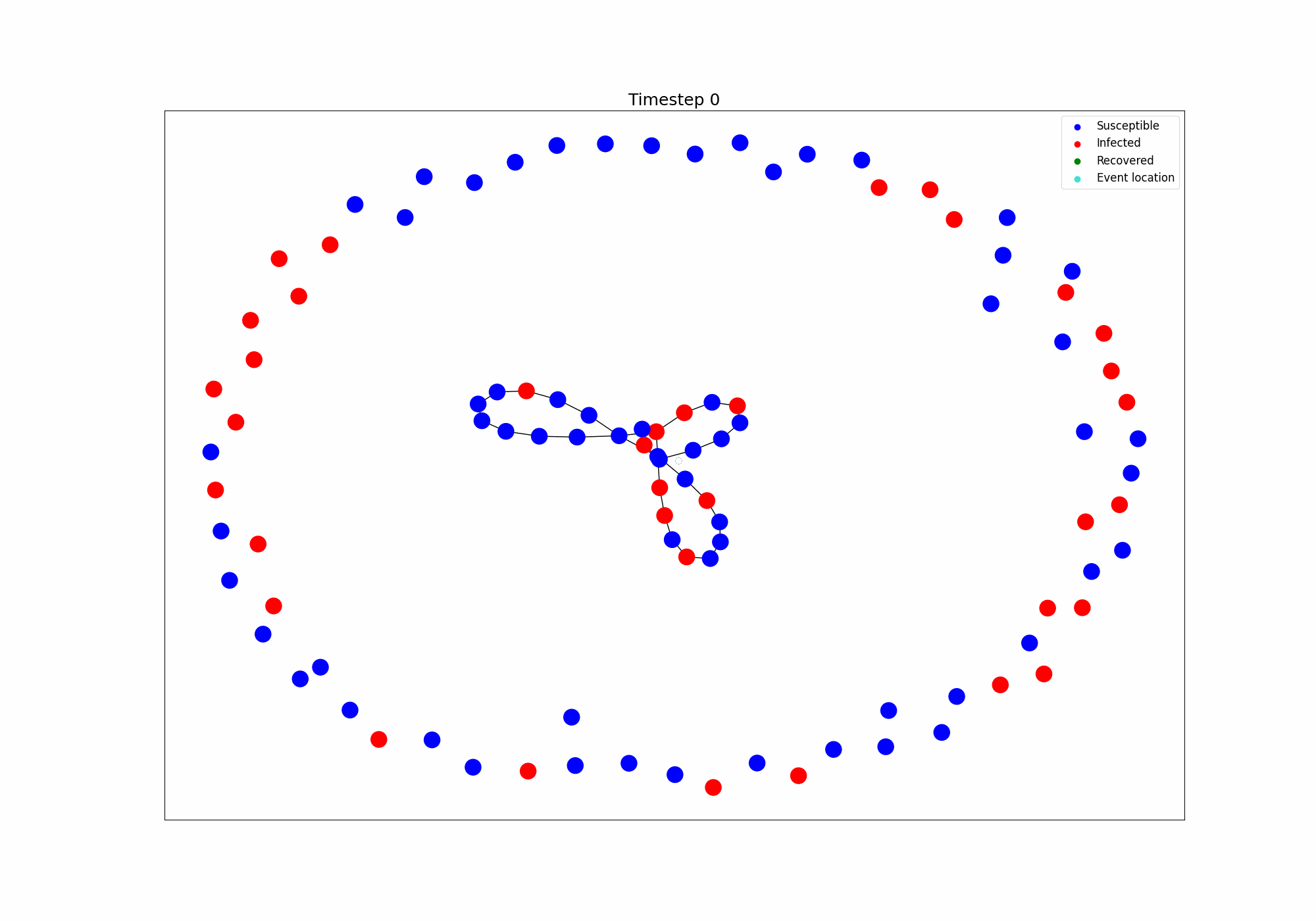 |
|---|---|---|
| Star Graph | Cellular Automaton | Multi-cycle graph |
The edges represent connections between the agents and the node colours represent the changing agent disease state.
But these are static networks, which aren't truly representing real-world phenomena. Episimmer allows you to have cycling dynamic networks which more closely align with real-world social networks than static networks.
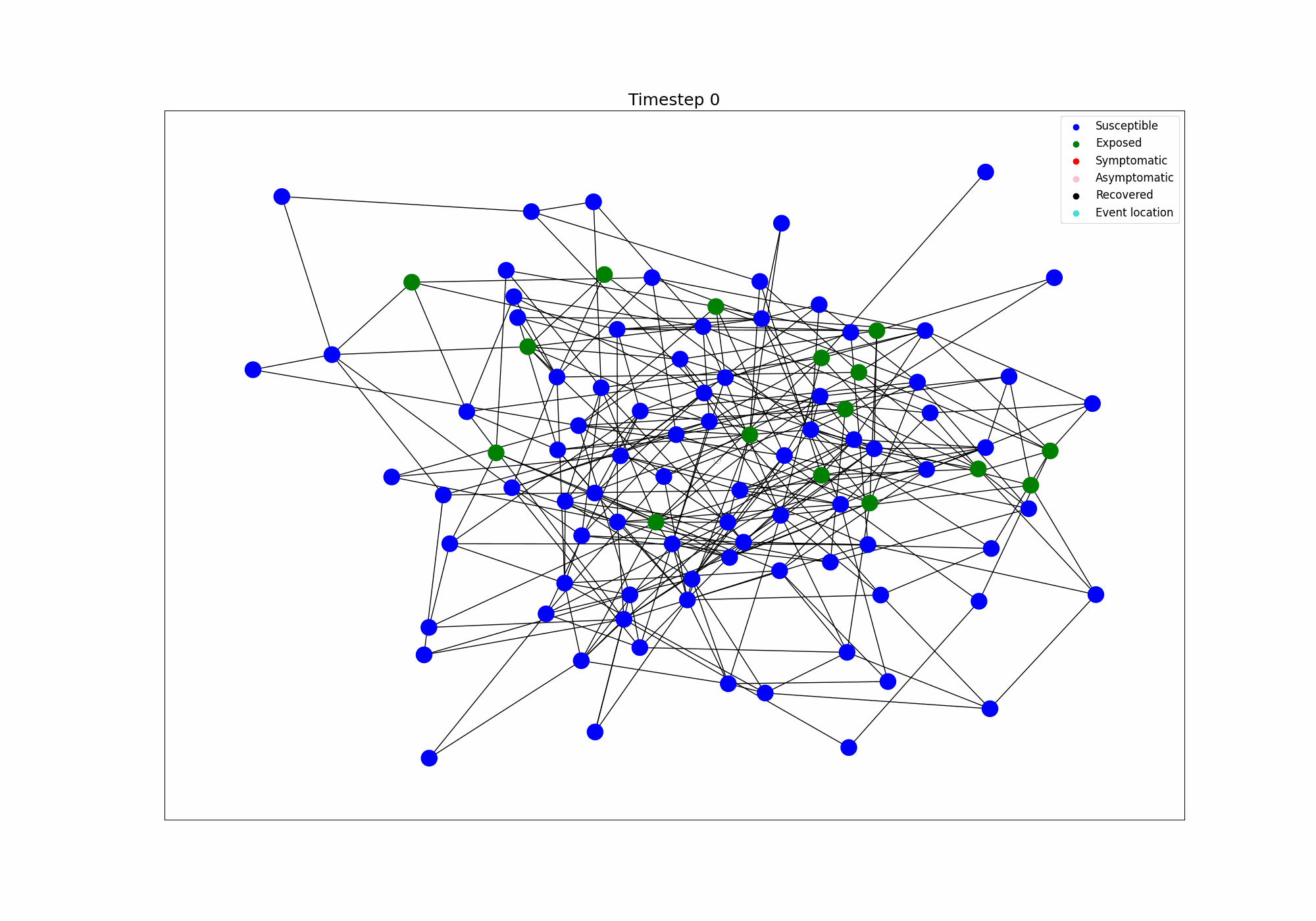
Dynamic Network
The Disease Model
Episimmer also allows easy creation of compartmental disease models. You can be as creative as you like, for example,
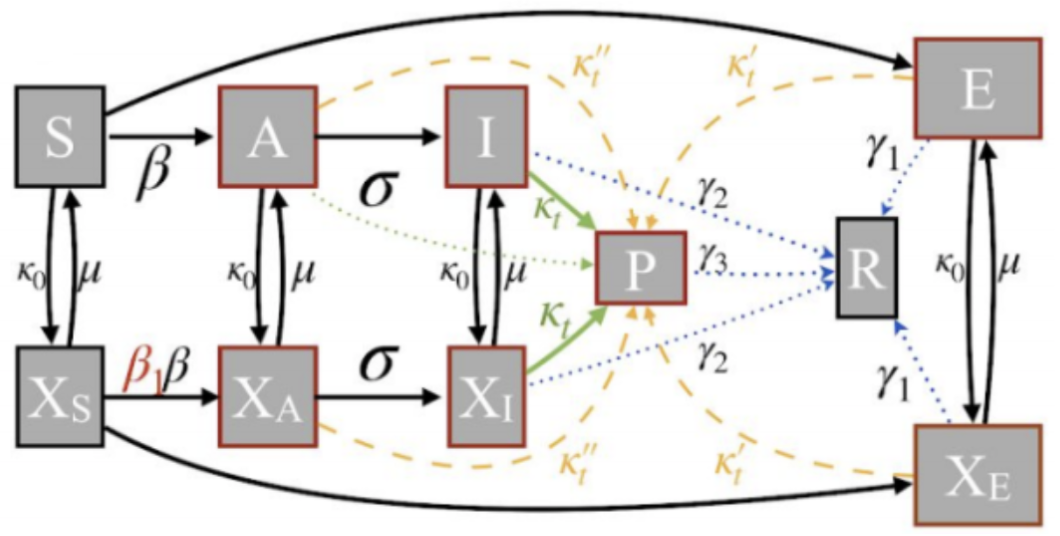 |
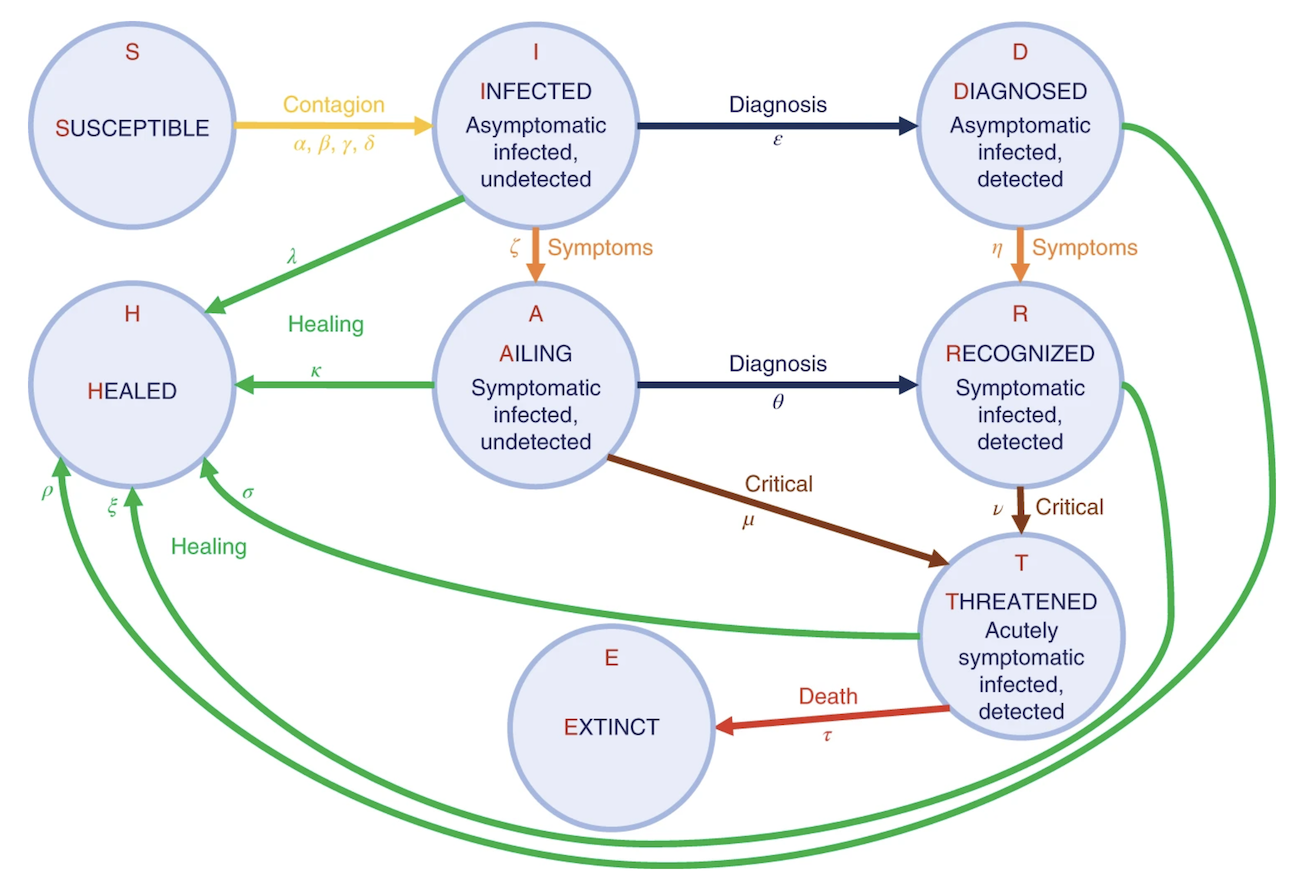 |
|---|---|
| Complex Model 1 (Taken from here) | Complex Model 2 (Taken from here) |
Or you could even model a fancy Zombie Apocalypse disease model like this
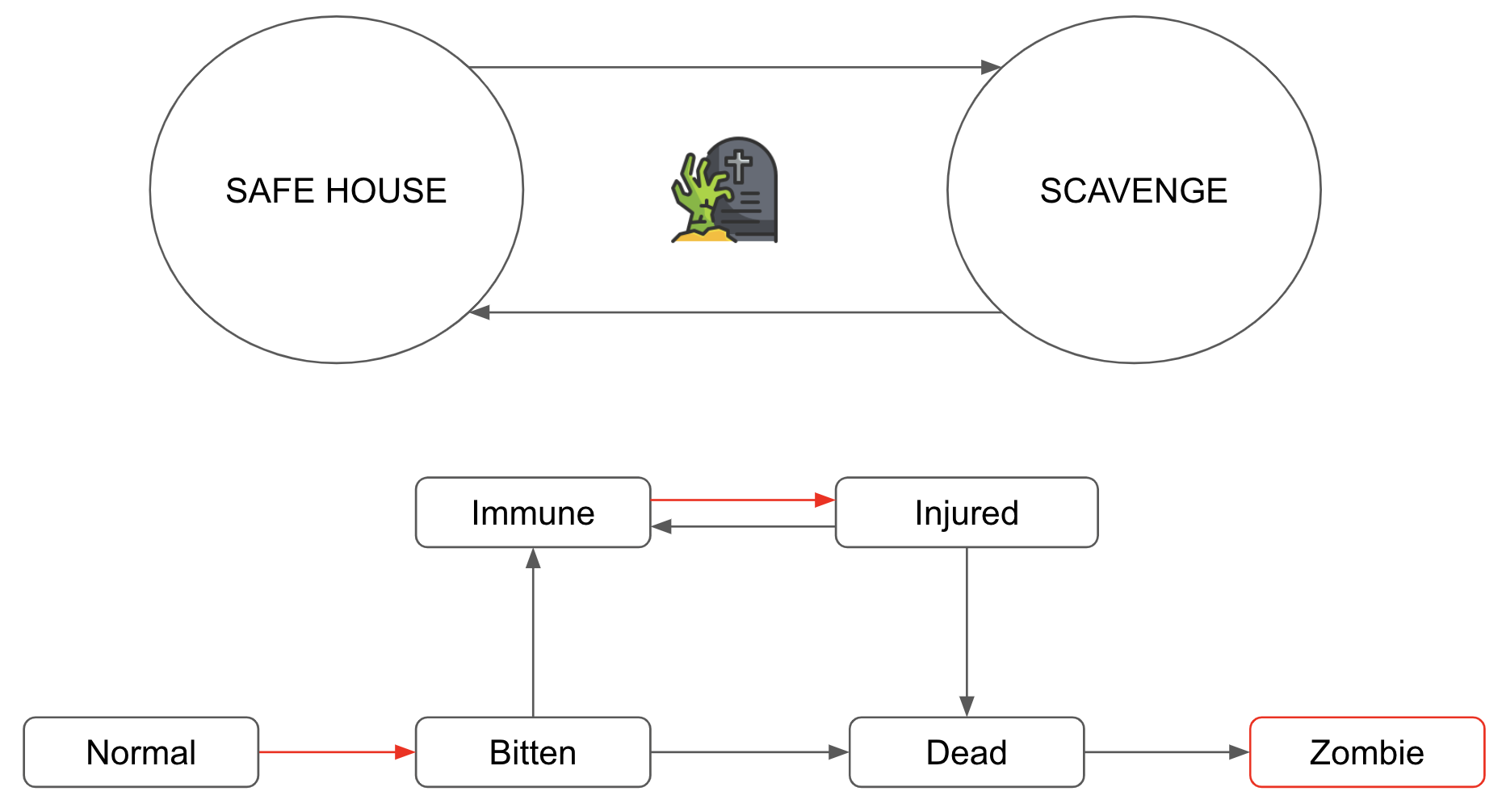
Zombie Apocalypse
Intervention Policies
There are many kinds of policies that can be implemented in Episimmer by the user and each policy is built to be flexible. Multiple policies defined by the user can be run in a simulation seamlessly. We have also created templates for the user to test different kinds of examples of policies.
Currently, the policies that can be implemented are:
- Lockdown Policy
- Testing Policy
- Vaccination Policy
- Contact Tracing Policy
Vulnerability Detection
Vulnerability Detection refers to finding vulnerabilities in the system that highly affect or are highly affected by disease spread. A major part of decision support is detecting vulnerabilities in the ecosystem and taking appropriate actions to control the disease spread.
Two kinds of Vulnerability Detection exist in Episimmer -
- Agent-based Vulnerability Detection
- Event-based Vulnerability Detection
For more details, check out the official documentation.
Installation
Prerequisites
Episimmer requires python 3.7+.
Install using pip
If you are using Linux or macOS you can install episimmer from PyPI with pip:
pip install episimmer
Install from source
Or you can install from source
- First clone this repository:
git clone https://github.com/healthbadge/episimmer.git
- Then, to install the package, run the following command inside the episimmer directory:
pip install -e .
- If you do not have pip you can instead use:
python setup.py install
If you do not have root access, you should add the --user option to the above lines.
Running Examples
To run examples -
If you installed episimmer through PyPI, run:
episimmer <Path_to_Example>
Otherwise, in the repository, run:
python episimmer/main.py <Path_to_Example>
Command line Arguments
positional arguments:
example_path : Pass the path to the data folder
optional arguments:
-np or --noplot : Restrict plotting the time plot after simulation. Default = False
-vul or --vuldetect : Run Vulnerability Detection on the data folder based on VD_config.txt. Default = False
-a or --animate : Creates a gif animation of the time plot. Default = False
-s or --stats : Choose to store statistics. Default = False
-viz or --vizdyn : Creates a gif of the simulation environment progressing through the days. Default = False
Tutorials
Check out Episimmer's official documentation for a complete tutorial on the simulator. You may also go through these colab notebooks for a more hands-on tutorial on Episimmer:
- Tutorial 1 - Episimmer Basics
- Tutorial 2 - The Environment
- Tutorial 3 - Disease Modelling
- Tutorial 4 - Intervention Policies
- Tutorial 5 - Vulnerability Detection
UI
Our current UI can be found at here. Note that it has minimal functionality as compared to running the codebase directly. Yet it competes with the current state of the art systems with multiple novel features.
Episimmer is currently Work in Progress. Check out these point solutions built using the Episimmer codebase.
Project details
Download files
Download the file for your platform. If you're not sure which to choose, learn more about installing packages.
Source Distribution
Built Distribution
Hashes for episimmer-2.2.2-py3-none-any.whl
| Algorithm | Hash digest | |
|---|---|---|
| SHA256 | 78c2a177b022f68d61a32b24c071dd6a3eb77ef0cfb790379127be11eef769e6 |
|
| MD5 | 989efe4ba8dce17d164e23d7ccaceff0 |
|
| BLAKE2b-256 | e586f555c5c211f9bbe8d28f08adbea4ff682ebdbb9cb15518634529a1e40d9e |
















